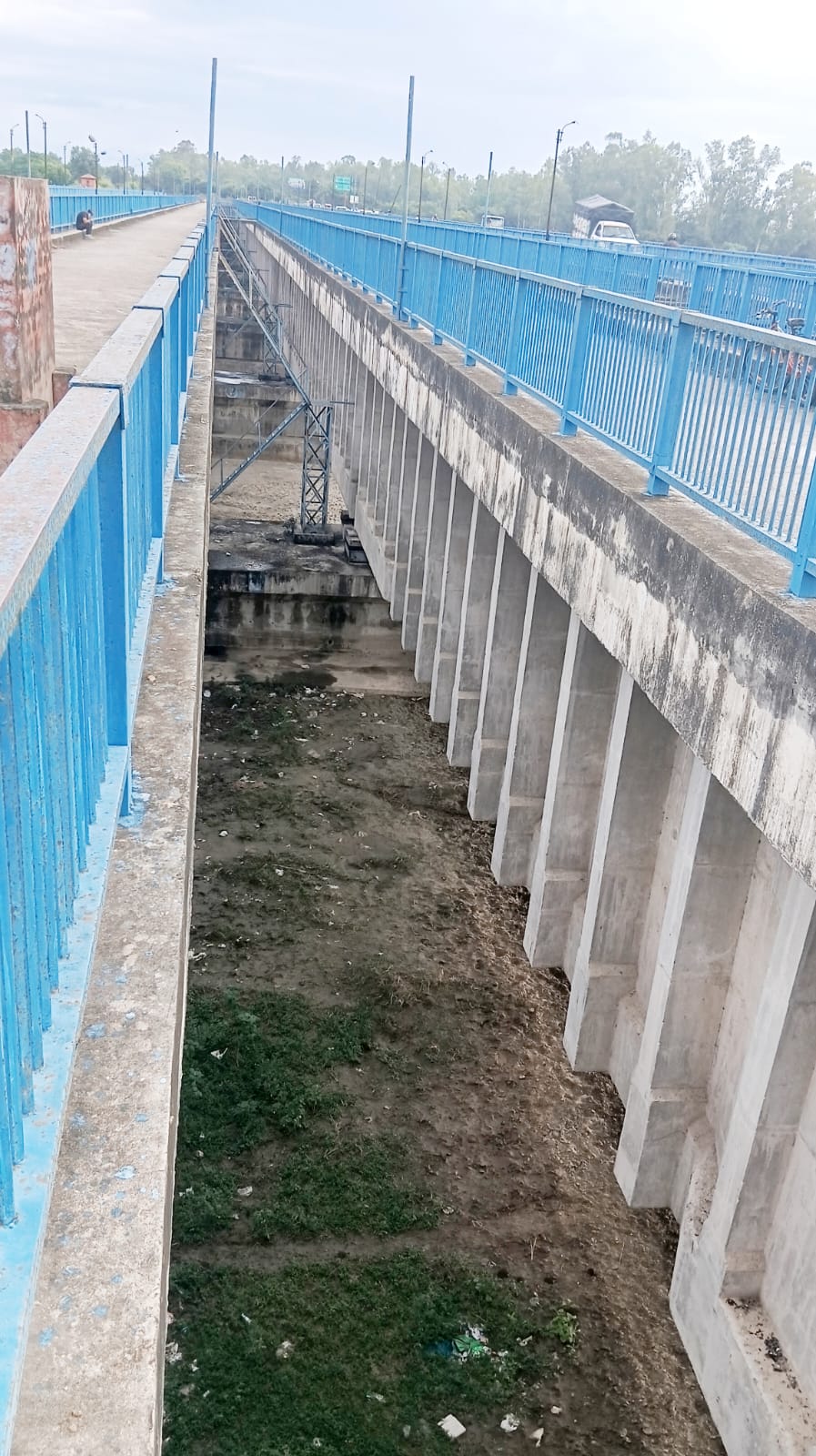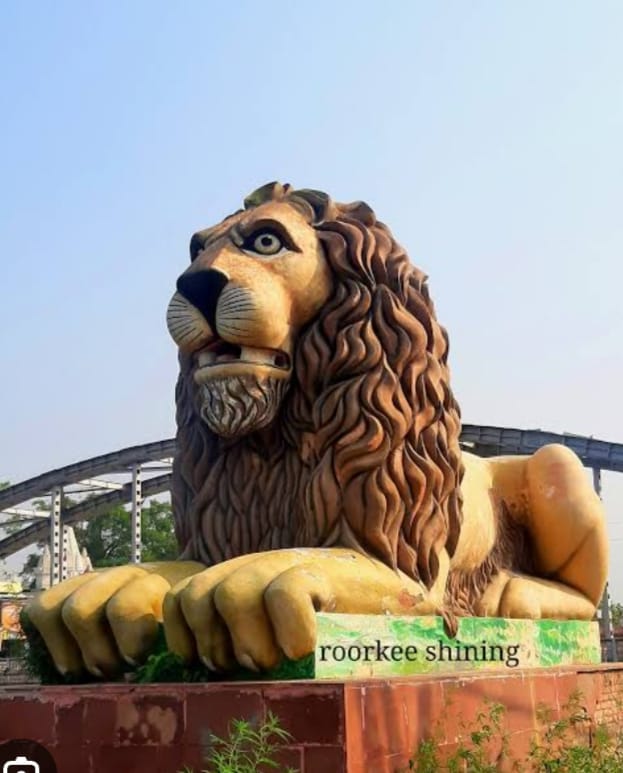By
Kaushal Kishore
Materials Engineer, Roorkee
The new Solani aqueduct on Ganges canal Roorkee was built with prestressed concrete which allows for longer spans and a simple more robust design compared to old bricks, lime- surkhi mortar masonry arches of the old aqueduct, in which 8.5 crores bricks were used, while iron railing used in the sides of two lanes were imported from England. This is interesting to note that materials bringing those days on ship from England to Indian ports take 6-10 weeks via the Suez canal or 3 to 6 months via the longer Cape of Good Hope. Calculate in it also time taken on road from Indian ports to Roorkee.
After retirement from University of now IIT Roorkee I joined M/S Roffe Construction Chemicals Pvt.Ltdd, Mumbai as it’s Chief Concrete Technologists afterwards I became it’s one of the Director.

AQUEDUCT picture taken on 7/10/2025
For the contractor of above aqueduct I designed M-40 grade of concrete with Roffe superpladticizer. Those interested may read my paper by visiting Google site and log in; Civil engineering portal The Ganges canal by Kaushal Kishore.
I had designed numerous concrete mix design almost all cements of India in this I find Utra Tech cement as one of best cement OPC and PPC both With Ultratech cement I had designed numerous concrete mixes from ordinary strength to M-80 grade concrete, self compacting concrete, shot crete concrete, fibre reinforced concrete, fly ash concrete and more There is life after retirement and after retirement I worked for 30 year’s which includes in free time working in home research and testing laboratory and numerous construction sites visits almost all India and outside India. At my age of 92 years I still work for 12 hours daily.
I had never worked for money. In spite of doing so gigantic work what to say about car I even do not have 2 wheeler not any of my house not a single inch of land in this world only pension from IIT Roorkee and few clothes

























dear sir,
need help here….
a sample of a multi storey structure with elevator shaft using staad pro…
for my thesis…
your help would be highly appreciated…
To all CIVIL ENGINEER:
what should i do..my adviser, dont know how to explain the solution of what he teach us..so what should i do to learn more so that i can continue my civil engg course…??
plz..advise me….
thanks!
very useful……
thanks
dear sir,
need help here….
a sample of a multi storey structure with elevator shaft using staad pro…
for my thesis…
your help would be highly appreciated…
please give me the basic applied mechanics details.
am steve from juba university in sudan ,the site is realy good for gaining more from different civil engineers and civil student al arround world.
i need notes or presentation for structure analysis. plz snd me as soon as possible.
thanks
I m student of civil engineering.i hve to prepare a Final project can anybody help me.
I am a civil engineer who ventured into IT field as there was boom in that sector and i had a fair knowledge of computers. I was always good in programming in my Student Career at the same time i was a very good civil engineering student. I stood 3rd in my Department in College (N.I.T Patna).Now looking at the IT bust and fickle career growth in this sector i want to move back to civil engineering. I have a total of 1.5 years in IT industry.
Can anyone please guide me as to how am i suppose to get back. I also require some healthy comments to frame my resume to apply for job in civil. I will send you my credentials .
can any one suggest a topic for UG project work in design or analysis of structures
sir,
I have done diploma in civil engg.
Now i working structural detailing & estimating.
I want planing,survear, licence on my diploma certificate.
sir so what i do for this?
Thanks
Dear Mr.Rohit
I hope now you are realize the need of civil engg.Please go ahead & work with a structural design
consultancy firm for another 5yrs in your carrier & then you will ina greater heights.
275
neelambarikalusalingam Says:
March 13th, 2009 at 1:23 pm
what is meant by critical flow in hydraulics?
Reply,
Critical flow is the stage of flow when a hydraulic jump takes place in a flow. Thereby there occurs an energy loss. A typical case is allowing a liquid to pass through a slope. To visualise this easily, fell the situation that water while passing through a channel passes a stretch where the cahhel bottom is sloping down. here the depth of water will get reduced and the velocity will get increased. Every liquid has got a critical depth according to its velocity and various other factors. If the depth of flow is equal to that depth then its called critical flow. If the depth is more than critical its called subcritical flow and if it is reverse its called supecritical flow. In hydraulics its always better to avoid supecritical situation because it causes energy loss.
GOOD CIVIL ENGINEERING HOME
hi
i m the uupcomming civil engg
can i get some information about the developing technologies in ……………………
hi
i am doing civil engg now i am in 3yr(2 sem) .which elective should i select in 4 yr . thnx if u guide me
and how is the statpro?
Hi,
I am up comming civil engineer.
Dear All,
I is very nice for all types of civil engineer and even student. Can anyone provide electronic dictionary of civil engineering or any links related to such types.
Thanks
What will be the 28 days strenth for M20 cubes casted in field , either 20N/sqmm or 24N/sqmm.
MY NAME IS FATOBA OLANREWAJU DIMEJI, I’VE LEARNT A LOT FROM THIS WEBSITE AND I’LL STILL LOVE TO KEEP IN TOURCH WITH MY OTHER FELLOW STUDENT STUDYING CIVIL ENGINEERING AROUND THE WORLD.I’M IN MY 300L CIVIL ENGINEERING AT UNIVERSITY OF ADO EKITI, EKITI STATE, NEGERIA.
I’M STUDYING CIVIL ENGINEEERING WITH ALL THE PASSION THAT I HAVE,PLS I WANT TO KEEP HAVING THE BEST CURRENT INFORMATION EITHER BY MAIL: